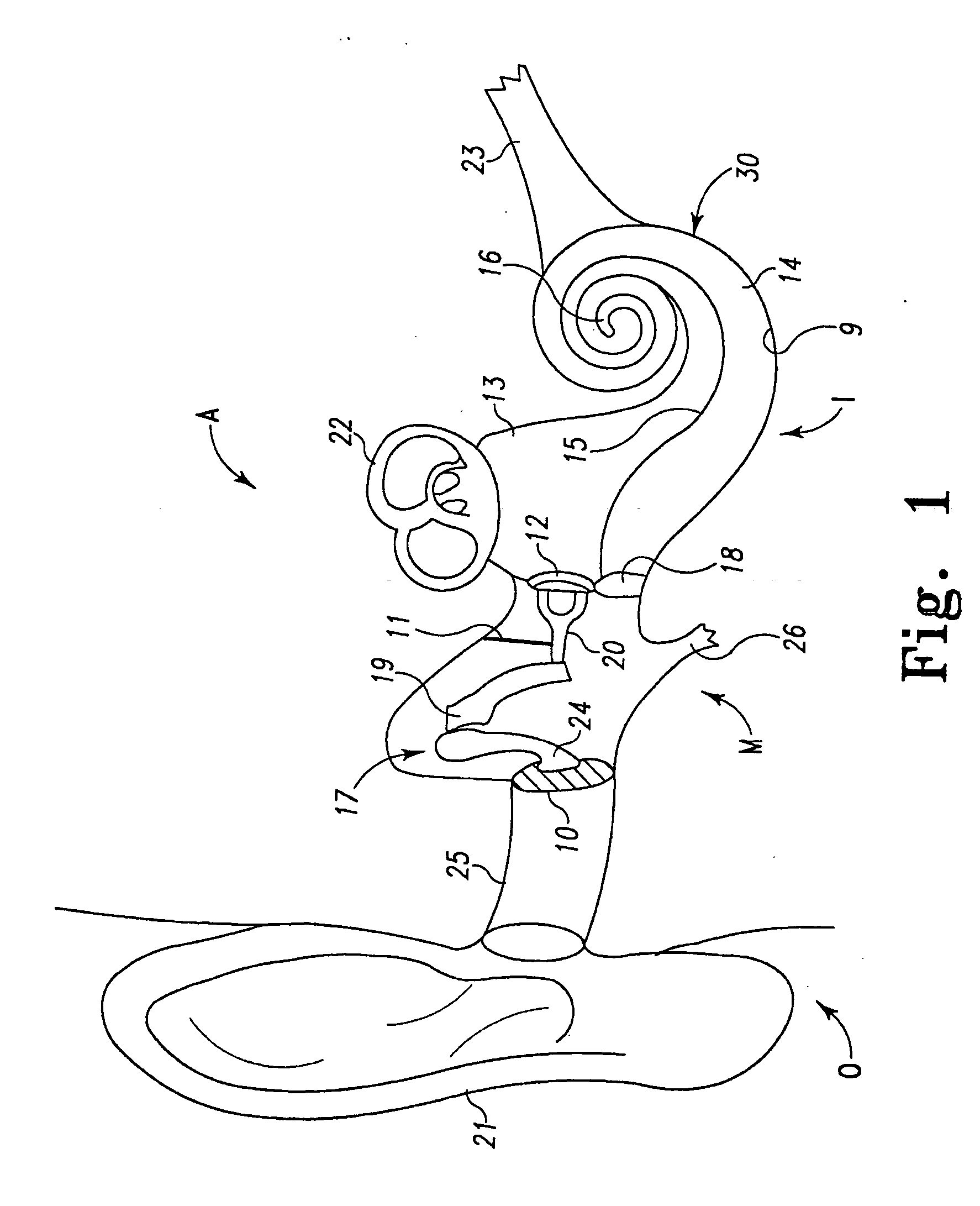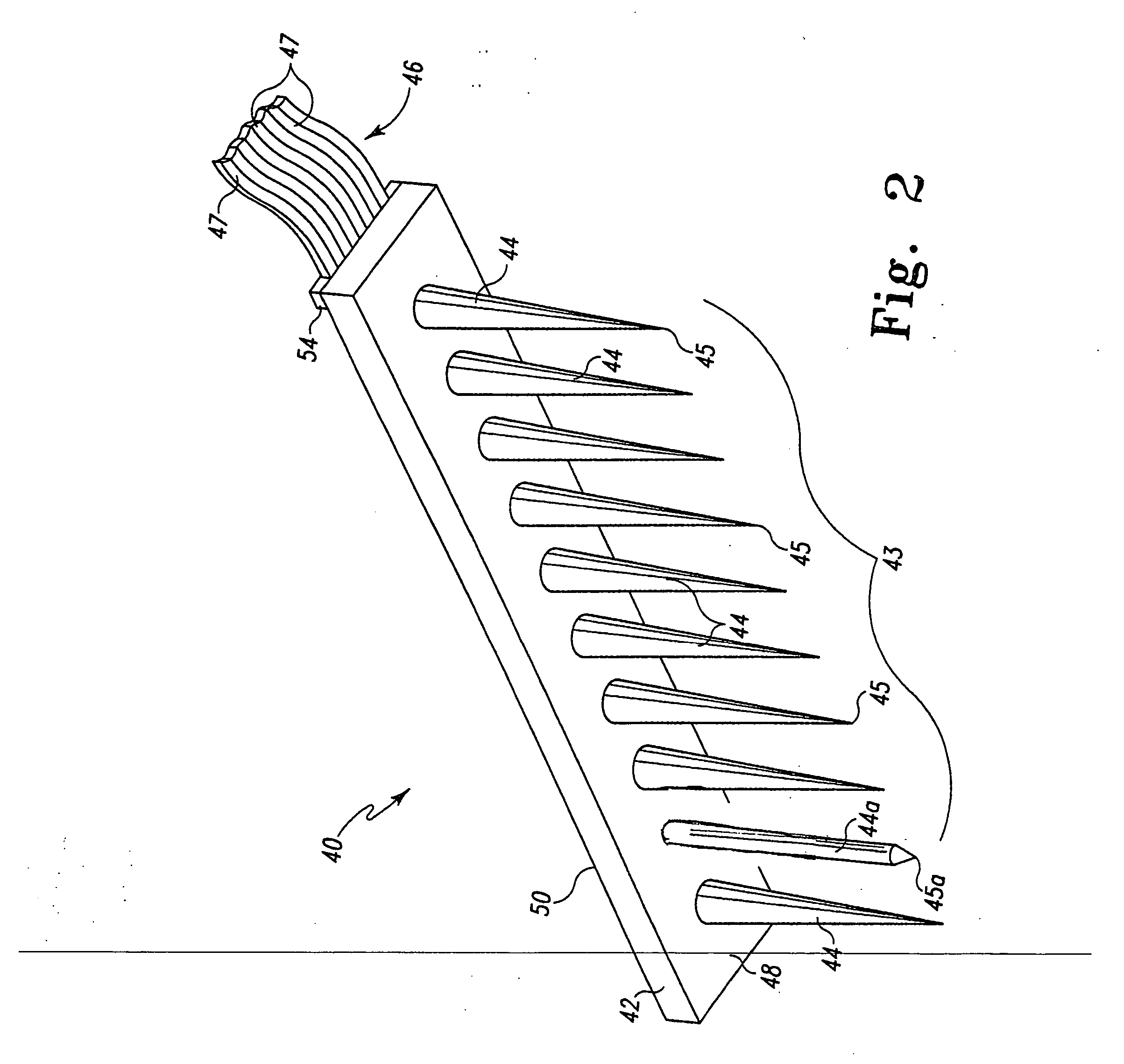The greatest limitation of a hearing aid is not technologic; rather, it relates to the number of surviving functional cochlear hair cells.
If only a small percentage of the cochlear hair cells are viable, their stimulation by amplification of the sound
signal cannot completely compensate for the
hearing loss caused by the nonfunctional hair cells.
However, there are various problems with intra-cochlear hearing aid implants.
There is a great chance of intra-cochlear damage by penetration of the intra-
cochlear implant electrode through multiple membranes of the cochlea, with consequent destruction of the small
organ of Corti and the other anatomic structures within the cochlea, as well as giving rise to degeneration of neurites and
spiral ganglion cells.
Since the
ganglion cells carry the electronic stimulus to the cochlear nerve and the brain, then if the
ganglion cells are not present, a poor result would be expected from the
cochlear implant.
However, because an intra-
cochlear implant is generally large and stiff, as it is coiled through the cochlea, it may damage the cochlear contents.
Thus, it should be appreciated that the intra-
cochlear implantation technique can be very traumatic and reduce the ability of the
implant to successfully stimulate residual neural elements in patients with hearing loss.
Another problem with intra-cochlear implants concerns the number of electrodes on the implant.
Various problems existed with these early extra-cochlear implants.
First, it took an extraordinary amount of electrical stimulation energy to stimulate the spiral ganglia
nerve cells appropriately.
Second, there was dispersion of the electrical energy, which caused the electrical signals to
impact a large area of the cochlea which contains a large number of ganglia, as opposed to a small specific point on the cochlea.
Moreover, extra-cochlear implants were positioned too far from the targeted ganglia, causing difficulties in receiving the frequency differentiation.
Known prior art implants covered only a very limited part of the cochlea because they were only surgically placeable on the lateral side of the cochlea.
However, Strutz's device and implantation technique has several major impractical standpoints.
While six to twelve millimeters appears to be short, this length may provide a difficult and long distance to physically dissect blindly inside of a coiled
snail-shell structure.
The endosteum is quite fragile and prone to tearing when stretched.
Since one is not looking directly at the endosteum as one makes the tunnel with an instrument tip, it would be quite difficult to avoid tearing the endosteum.
However, it would be nearly impossible to create a 180 degree pocket since one would most likely rupture through the endosteum and enter into the cochlea during the process of creating the pocket.
Also, the other delicate internal cochlear structures could be damaged in the process.
Gibson's device and implantation technique would have exactly the same difficulties as Strutz.
Again, the Gibson device suffers from the same difficulties in
dissection of 7 to 10 mm of depth pocket beyond the cochleostomy in a soft
surgery technique that would most probably lacerate the cochlea's osseous spiral lamina.
The Pau and Rodriquez device suffers from the same drawbacks as the Strutz and Gibson designs.
In summary, the major difficulties with the pocket techniques discussed in Strutz, Gibson and the Pau / Rodriguez / Cochlear Corp. references are that one is limited firstly in length of what one can do because of the
snail shell-like curve of the cochlea and secondly, with the curvature of the cochlea as one is dissecting the pocket, one will most probably dissect through the endosteum and then push the electrode intra-cochlearly, all the while, destroying residual
anatomy.
 Login to View More
Login to View More  Login to View More
Login to View More 


